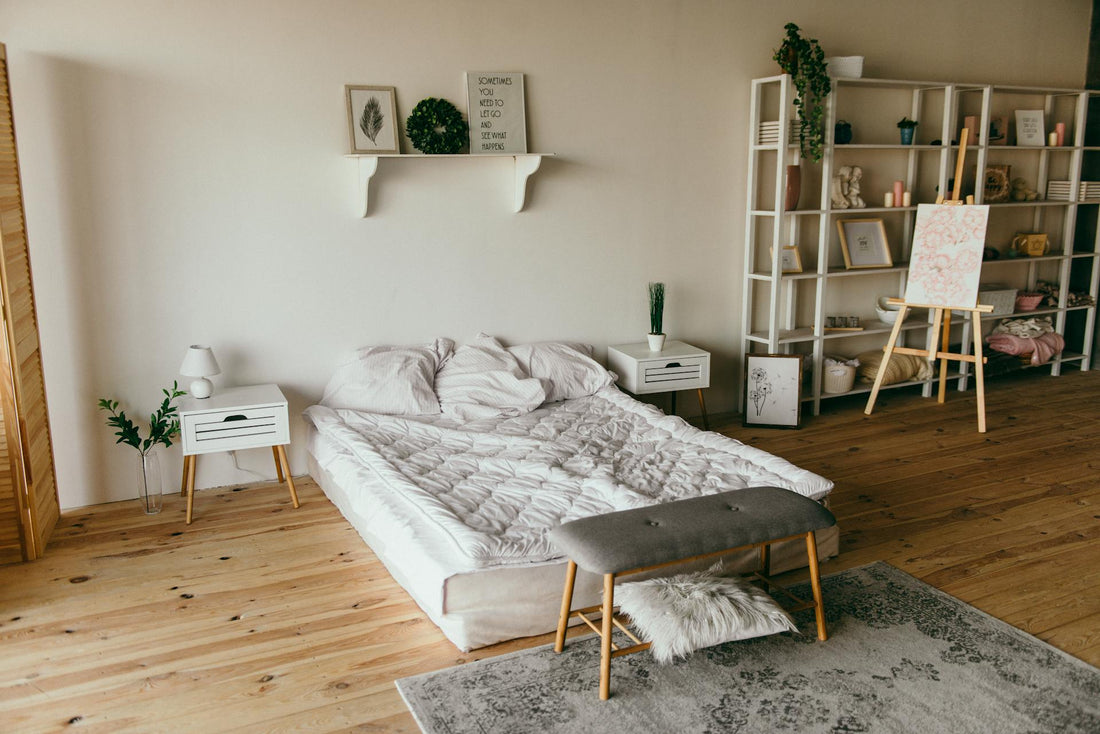The Impact of Bedroom Layout on Sleep Quality

Getting a good night’s sleep isn’t just about investing in a plush mattress or the softest sheets. The way you arrange your bedroom—the placement of your bed, your choice of furniture, even the colors on your walls—can dramatically influence how well you rest. In this blog, we’ll explore the subtle yet powerful ways that bedroom layout affects sleep quality, and share practical tips for creating a sanctuary that invites restful slumber.
1. The Bed’s Position: More Than Just a Focal Point
Your bed is the centerpiece of your bedroom, both visually and functionally. Yet many of us place it wherever it “fits” without considering the psychological effects:
Commanding Position: Ideally, your bed should be placed so that you can see the door from where you lie, without being directly in line with it. This arrangement, rooted in feng shui principles, conveys a sense of security and control, reducing subconscious stress as you drift off.
Avoiding Cluttered Corners: Pushing your bed into a tight corner might seem like a space-saver, but it can make the room feel cramped. Give your bed breathing room on at least two sides to foster a sense of openness and ease.
Headboard Against a Solid Wall: Solid backing beneath your head provides psychological support. Avoid placing the head of your bed against windows or thin partition walls, which can feel unstable and lead to restless sleep.
2. Flow and Function: The Power of Clear Pathways
Imagine waking up and tripping over a stack of books because you forgot to turn on the light. Cluttered pathways not only pose safety risks but also keep your mind in a state of alertness:
Three-Foot Rule: Aim for at least three feet of clear space on either side of your bed. This clearance allows you to get in and out without obstacle-induced anxiety.
Dedicated Zones: If space allows, create separate areas for reading, dressing, or meditation. Distinct zones help signal to your brain what activities belong where—so when you’re in bed, your mind knows it’s time to wind down.
Minimalist Furniture: Choose only the pieces you actually use. A nightstand, a dresser, and perhaps a chair are often enough. The fewer items competing for visual attention, the more serene the environment.
3. Light Management: Balancing Brightness and Darkness
Lighting plays a starring role in regulating your circadian rhythm—the body’s internal clock that dictates sleep-wake cycles:
Natural Light: Position your bed to soak up morning sunlight, which helps anchor your circadian rhythm. However, use blackout curtains on the window nearest your bed to keep early rays from waking you prematurely.
Layered Lighting: Incorporate multiple light sources—overhead fixtures, bedside lamps, and perhaps a soft, low-level floor lamp. This lets you dim lights gradually as bedtime approaches.
Blue Light-Free Zones: Keep electronics off your nightstand, or invest in bulbs and devices that filter out blue light. Blue wavelengths suppress melatonin, the hormone that signals your body it’s time to sleep.
4. Color and Texture: Crafting a Cozy Canvas
Colors and textures might sound like decorative considerations, but they profoundly impact mood and relaxation:
Soothing Hues: Stick to a palette of soft blues, muted greens, or gentle grays. These shades mimic natural settings—think sky, forest, and stone—and promote calmness.
Accent Balance: If you love bold colors, use them sparingly—perhaps in throw pillows, a bed runner, or an art piece. Too much saturation can overstimulate the senses.
Tactile Comfort: Layer your bed with cozy blankets, cotton or linen duvets, and mixed-texture pillows. The interplay of soft, breathable fabrics helps regulate body temperature and adds a tactile invitation to rest.
5. Decluttering for Peace of Mind
A cluttered room often leads to a cluttered mind. Unresolved tasks and visual chaos can trigger anxious thoughts at bedtime:
The “One-In, One-Out” Rule: For every new item you introduce—be it a book, garment, or trinket—remove something else. This keeps possessions from piling up.
Hidden Storage Solutions: Invest in under-bed drawers or baskets to corral items you need but don’t use daily. Concealed storage maintains a clean aesthetic without sacrificing functionality.
Daily Tidy-Up: Spend five minutes each evening straightening pillows, folding clothes, and clearing surfaces. This small ritual signals to your brain that the day is ending.
6. Ambient Elements: Sound, Scent, and Greenery
Beyond layout and organization, subtle ambient touches amplify comfort:
White Noise or Nature Sounds: A gentle fan, white-noise machine, or a playlist of rainfall can mask disruptive noises—neighbors, traffic, or a snoring partner.
Aromatherapy: Scents like lavender or chamomile are proven to reduce stress and promote sleep. Use a diffuser or lightly spritz your linens before bed.
Indoor Plants: A small potted fern or peace lily not only purifies air but also brings a calming presence. Stick to low-maintenance varieties so that caring for them doesn’t become another chore.
7. Personalization: Making the Space Truly Yours
Ultimately, your bedroom is a personal retreat. While design principles provide a helpful framework, your individual preferences matter most:
Meaningful Decor: Display a cherished photograph, a piece of art that soothes you, or a small collection that brings joy. These touches foster a positive emotional connection to the space.
Seasonal Tweaks: Swap out heavier blankets for breathable ones in summer, and introduce richer textures—think velvet or wool—during colder months. Adjusting your environment with the seasons keeps your room feeling fresh and comfortable year-round.
Test and Adjust: Notice how you feel when you enter your bedroom. If something unsettles you—too much light, a chaotic corner, or an uncomfortable chair—experiment with moves until you find what works.
Final Thoughts and Action Steps
When it comes to better sleep, your bedroom’s layout isn’t just window dressing—it’s fundamental to how your body and mind prepare for rest. Here are a few quick action steps to transform your space:
-
Reposition Your Bed: Aim for that “commanding” placement—door in view, headboard on a solid wall, breathing room on two sides.
-
Declutter Pathways: Clear three feet of space around your bed and designate zones for different activities.
-
Layer Your Lighting: Combine blackout curtains, dimmable lamps, and blue-light–filtering solutions.
-
Embrace Soothing Colors and Textures: Stick to nature-inspired hues and mix soft fabrics for tactile comfort.
-
Incorporate Ambient Touches: Add a plant or two, use aromatherapy, and consider a white-noise source.
Don’t underestimate the power of a thoughtfully arranged room. By adjusting a few key elements—bed position, furniture selection, lighting, and decor—you’ll create an environment that not only looks inviting but actively encourages restful, rejuvenating sleep. Sweet dreams await!
